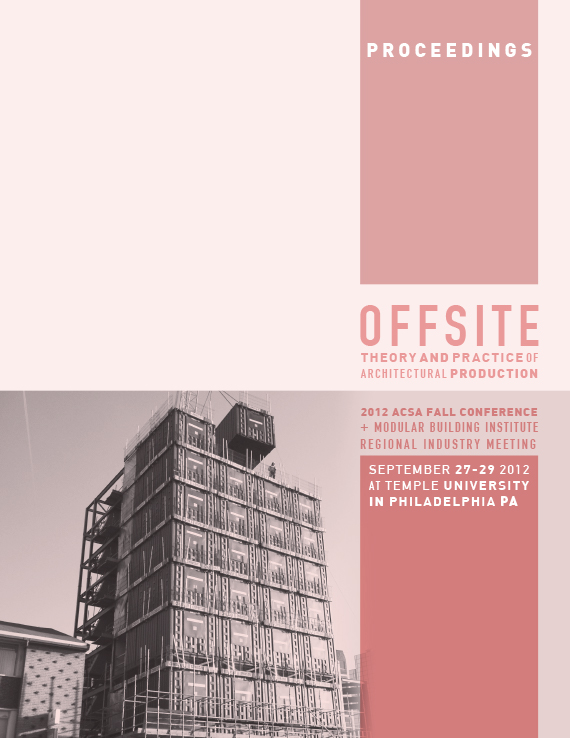Author(s): Bradley Walters & Mark Mcglothlin
If a building looks better under construction than it does when it isfinished, then it is a failure.- Douglas CouplandIn thinking of the intersection between the ideas of design process, means ofconstruction, and the role of fabrication, a rather amusing commercial jumpsto mind. The commercial is structured around an idealized narrative, unfoldingthe initial meeting between architect and client. The architect, sporting astereotypical black suit and contrasting white hair, is walking a potential clientthough the expansive galleries and spaces of his office, accompanied withsnippets of awards and other evaluations of his design brilliance. The client,presented as a modestly refined couple, follows the architect dutifully throughhis parade, revealing not awe or adulation, but a quiet sense of reserved respect.The story continues to its climax, with the architect sitting across fromthe couple, asking with an unmistakable punctuated egotism, “and what canI do for you?” The couple’s reply begins with a momentary pause, followed bythe woman reaching into her purse and disclosing a faucet, which is placedfirmly on the desk and followed by the client’s verbal provocation, “Designa house around this.” The commercial closes quickly and cleverly with thearchitect looking back to the couple with a slightly perplexed gaze, as if tosuggest that his design insight and intuition was unexpectedly challenged bythe brilliant richness of the faucet. To be fair, the commercial is clear in itsintent to exaggerate the faucet as an object and in doing so take advantage ofthe architect stereotype with a playful, tongue-in-cheek characterization. Thatsaid, the commercial also reveals a different characteristic of the architecturaldesign process that we rarely and reluctantly acknowledge – the increasingcentrality of products in design culture.There are many questions that emerge from the idea of a product-centereddesign process, ranging from the familiar “kit-of-parts” exercises to the currenttrends in digital fabrication. This paper does not intend to address thebreadth of this topic, but rather to focus on how these ideas are grounded inpractice through the unorthodox variant of the Solar Decathlon competition,and more specifically through an examination of the RE:FOCUS house for the2010 Solar Decathlon Europe. While many of the houses that have competedin the Solar Decathlon competitions have steered towards more speculativeends, the RE:FOCUS house offers an interesting counterpoint, as it is at itscore a demonstration of multivalent design themes that lie between conventionand speculation, such as componentry, systems, materials, space, use andoccupation. These ideas are further intertwined with a running dialogue withthe dualities of assembly/disassembly, of permanence/mobility, and of place/placelessness. Through a careful examination of the RE:FOCUS House, thispaper will explore the numerous design aspirations and pedagogical questionsof design/build experiences and of integrated disciplinary learning, and in doingso further examine the evolving relationship between transformative ideasof design, fabrication and the conventions of construction.
Volume Editors
John Quale, Rashida Ng & Ryan E. Smith
ISBN
978-0-935502-85-5

 Study Architecture
Study Architecture  ProPEL
ProPEL 
